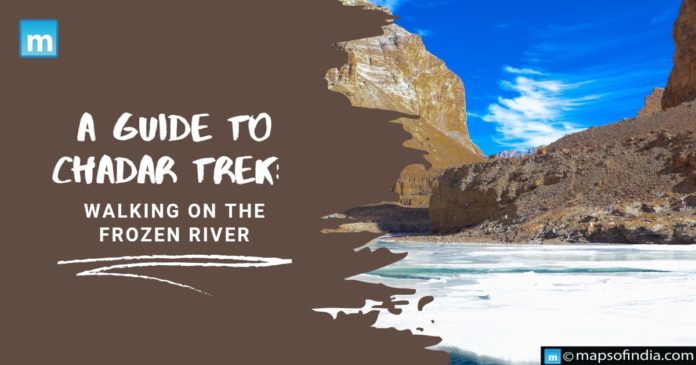The Chadar River Trek, also known as the Zanskar Trek or the Ladakh Frozen River Trek, is the only one of its kind in the world that takes place in the Zanskar Valley of Ladakh, India. The word “Chadar” means “blanket” and it refers to the sheet of ice that forms over the frozen Zanskar River throughout the winter. The Chadar Frozen River Trek Ladakh, as it is presently known, is a winter walking path connecting communities along the Zanskar River. Locals have used this frozen riverbed for trade and transportation for decades. The Chadar Trek is a challenging but rewarding one and is typically done in January or February when the ice is thick enough to support the weight of the trekkers.
It is not for the faint of heart. With average daytime temperatures of -10°C and nightly temperatures of -20°C, the temperatures can be exceedingly chilly. The trek is also physically challenging, with trekkers walking for 6-8 hours every day on average. However, the Chadar Trek has numerous benefits. With snow-capped mountains, ice waterfalls, and brilliant blue skies, the scenery is breathtaking. The Trekis also an excellent chance to learn about Ladakh’s distinct culture.
Here is a brief guide to the Chadar Trek:
Best Time To Go
The Chadar Trek is best done in January or February when the ice is thick enough to hold the weight of the trekkers. However, if the ice conditions are acceptable, the expedition can also be completed in December or March.
Duration Of The Trek
The Chadar Trek is approximately 105 kilometers long. The journey begins in the town of Chilla and concludes in the village of Padum. The Chadar journey is normally a 6-7 day journey, although depending on the fitness level and the time of year, it can be shorter or longer.
Budget
The cost of the Chadar walk varies depending on the length of the walk and the quality of service one wants. A normal 6-day trip with full board lodging and porterage will cost roughly INR 25,000.
What Not To Forget
-
Warm gear
Bring lots of warm clothing, such as a jacket, hat, gloves, and scarf. It’s also a good idea to have a balaclava and goggles to keep your face warm.
-
Hiking boots
Sturdy hiking boots with high traction are required. Because the ice might be slippery, you should wear footwear that gives good traction.
-
Trekking poles
Trekking poles, especially on slippery ground, can help you with balance and support.
-
Tent & Sleeping bag
You must carry a tent required for sleeping. A sleeping bag rated for at least -20°C is also required.
-
Food
You must pack adequate food for the trek’s entire duration. Bringing calorie-dense snacks that will offer you energy is an excellent idea.
-
Water
You must pack enough water to last the entire expedition. It’s crucial to stay hydrated, especially when it’s freezing outside.
-
First Aid Kit
On every hike, you should always have a first aid kit with you.
Although the Chadar Trek is challenging, it is not technically tough. The temperature and the trek’s physical demands are the main obstacles. It’s crucial to be aware of the risks and take measures because the hike is also vulnerable to landslides.





